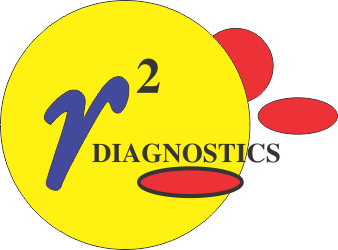Phospholin ES and Calcium Chloride
Assay Type
Description
Intended Use
Uses
The APTT Test is used to:
- Screen for congenital or acquired deficiencies in the intrinsic and contact pathways
- Monitor heparin therapy
- Aid in diagnosis of Lupus Anticoagulants
- Aid in diagnosis of inhibitors to Factors VIII, IX, and XI.

Ordering Information
| Catalog # | Product | Kit Configuration | Regulatory Classification | Product Insert (PDF) |
|---|---|---|---|---|
| 21-405 | Phospholin ES | 5 x 5 mL each | 510(k), CE | LL-4500_F PT RL |
| 21-410 | Phospholin ES | 5 x 10 mL each | 510(k), CE | LL-4500_F PT RL |
Principle of the Test
Phospholin ES is an activated Partial Thromboplastin Time (APTT) reagent using ellagic acid as the activator. PTT test and APTT test reagents contain a phospholipid component but, unlike a PT reagent, no coagulation protein component. APTT test reagents contain an activator to help initiate the coagulation cascade whereas PTT test reagents do not. Ellagic acid, a negatively charged molecule, acts as a negatively charged surface and activates the contact pathway through Factors XII and XI, which in turn activates FIX to FIXa. FIXa then activates FX to Xa, and the coagulation cascade proceeds through the common pathway.
The APTT is performed by adding one volume of Phospholin ES to one volume of citrated patient plasma, incubating for 3 to 5 minutes (dependent upon the instrument application), and then initiating the reaction with one volume of 25 mM CaCl2. The time to clot after the addition of the CaCl2 is recorded as the clot time.
Reporting Units
Handbooks and Guidelines
- Partial Thromboplastin Time (PTT and APTT), page 196-199, in Lapasota et. al., The Clinical Hemostasis Handbook, Year Book Medical Publishers, 1989. This handbook is no longer in print, but many pathologists have a copy.
- Krishnan J, Chapter 6, “Coagulation Testing”, and Olson J, Chapter 10, “Abnormal Activated Partial Thromboplastin Time”, in An Algorithmic Approach to Hemostasis Testing, Kottke Marchant ed., CAP Press, 2008
- Johnston M, Chapter 17 “Monitoring Heparin Therapy”, in Quality in Laboratory Hemostasis and Thrombosis, Kitchen, Olson, and Preston ed., Wiley-Blackwell, 2009.
- Clinical Laboratory Standards Institute, “Defining, Establishing, and Verifying Reference Intervals in the Clinical Laboratory; Approved Guideline – Third Edition”, CLSI document C28-A3, 2008.
- Clinical Laboratory Standards Institute, “Collection, Transport, and Processing of Blood Specimens for Testing Plasma-Based Coagulation Assays and Molecular Hemostasis Assays; Approved Guideline – Fifth Edition”, CLSI document H21-A5, 2008.
- Clinical Laboratory Standards Institute, “One-Stage Prothrombin Time (PT) Test and Activated Partial Thromboplastin Time (APTT) Test; Approved Guideline – Second Edition”, CLSI document H47-A2, 2008.
